1981: Population=New Leagues+New Names+More Games
The CIF board of managers passed a resolution at the end of the 1980-81 school year that resulted in the dividing of three leagues and the board-approved addition of a 10th regular-season game.
Cause and effect was County population, which had grown to 1.8 million in the 1980 census, with almost 1 million in the city.
–The 10-team Metropolitan League split into the Mesa and South Bay leagues, under a Metropolitan Conference umbrella.
Bonita Vista, Castle Park, Hilltop, Montgomery, and Sweetwater became the Mesa League in 3-A, a classification for playoffs instituted in 1979 to accommodate enrollment concerns. The South Bay’s Chula Vista, Coronado, Marian, Mar Vista, and Southwest were designated 2-A schools.
Bosses had to meet a second time to determine the names of the Metro’s new leagues. Other suggested names included Eastern, Western, Bay, Coast, Inland, and Freeway, according to Bud Maloney of the Evening Tribune.
CITY SHAKEUP
The Eastern and Western leagues realigned and a Central League was formed as part of a three-league City Conference.
The 3-A Eastern went from 8 to 5 teams, losing Clairemont and Point Loma to the 2-A Western, and Crawford to the 2-A Central.
The Western went radical as St. Augustine, Lincoln, Serra, and Hoover left and joined Crawford and formerly independent Christian in a six-team Central.
A revised Western of seven clubs included Clairemont, La Jolla, Mission Bay, Point Loma, San Diego, University, and first-year University City, which played a junior varsity schedule.
Palomar (3-A) and Avocado (2-A) replaced the Avocado East and Avocado West, the change not affecting schools except for division nomenclature. Explosive growth in the 1960’s and ’70’s had created several realignments within the original Palomar and Avocado circuits.
LONG AND WIDE
The San Diego Section’s acceptance of the Imperial Valley League’s four, smaller entities from the Southern Section had meant expansion in 1980 of the old Southern Prep League, now the Southern Conference with a Mountain-Desert League and Coastal League.
The Mountain-Desert, stretching about 125 miles east from Pine Valley (Mountain Empire) to Winterhaven (San Pasqual), also numbered Imperial, Holtville, and Calipatria.
The Coastal loop was more geographically agreeable, going up and down Interstate 5, 805 and their tributaries, to Army-Navy, Chula Vista Christian, La Jolla Country Day, Francis Parker, and Santa Fe Christian, plus, oddly, Julian, tucked away in the mountains.
— Left standing and unchanged was the nine-team Grossmont League, which in the future finally would split.
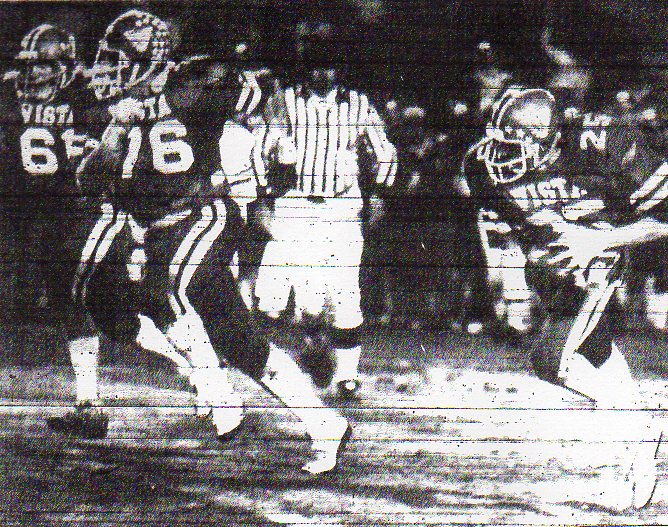
AIR CORYELL OF FOOTHILLS
Helix quarterback Jim Plum, throwing to star receivers Allan Durden, Karl Dorrell, and Craig Galloway, set a state record with 3,328 passing yards and passed for 32 touchdowns as coach Jim Arnaiz’ Highlanders posted a 10-3 record and went to the San Diego Section finals before the fogbound Scots lost a 34-16 decision to Vista.
Helix’ passing game had a familial connection to the San Diego Chargers’ “Air Coryell”.
Chargers running backs coach Earnel Durden, a former Los Angeles City player of the year at Manual Arts and all-America at Oregon State, was father of three Helix standouts, beginning with Mike, followed by Kevin, and finally Allan, a tough, shifty, 60-catch receiver.
Linkage did not stop with the Durdens. The all-purpose Dan Hammerschmidt was son of Al Hammerschmidt, who quarterbacked an upset victory by Cal Poly-Pomona in 1962 over Coryell’s San Diego State squad and who was Helix’ head coach from 1968-72, succeeded by Arnaiz.
The younger Hammerschmidt tied a record that can never be broken, a touchdown on a 99-yard pass play, with a couple added feet.
Hammerschmidt backed up Plum, returned kicks, played cornerback, and was variously described as “the heart and soul of Arnaiz’ defense.”
DAN HAD A HAMMER
Midway through the season Hammerschmidt found himself playing flanker on offense, stepping in for the injured Dorrell.
Helix was backed up to its half-foot line after Hammerschmidt misjudged his position in calling for a fair catch, fumbled, and barely saved a safety or a Granite Hills touchdown by recovering the punt just before the end zone stripe.
The Highlanders’ senior had no time to fret about his error.

On first down Plum pitched a lateral that Hammerschmidt caught, then dodged a tackler at his four-yard line, picked up a block from Durden, and took it to the house.
“After Jim threw me the pass I got that great block from Allan—he always blocks like that—and I just ran as hard as I could,” Hammerschmidt told the Evening Tribune’s Bud Maloney, who was covering the game, a 24-0 Helix victory.
OH, SAY CAN WE SEE?
Dorrell, Durden, and Galloway arguably were the best set of receivers on the same team in San Diego Section history. Plum ranks among the best quarterbacks and Arnaiz is in the top rung of coaches.
It should have been one of the all-time championship games when Helix met Vista in a rematch of the season opener for the 3-A title in San Diego Stadium, but forces of nature and the pounding attack of Dick Haines’ Vista Panthers prevailed.
Thirty-plus years later Steve Brand of The San Diego Union remembered the game as if it were yesterday.
“Helix was loaded with talented athletes,” said the longtime prep writer. “Vista just hit you. It was quite a matchup, until the fog rolled in early in the game.”
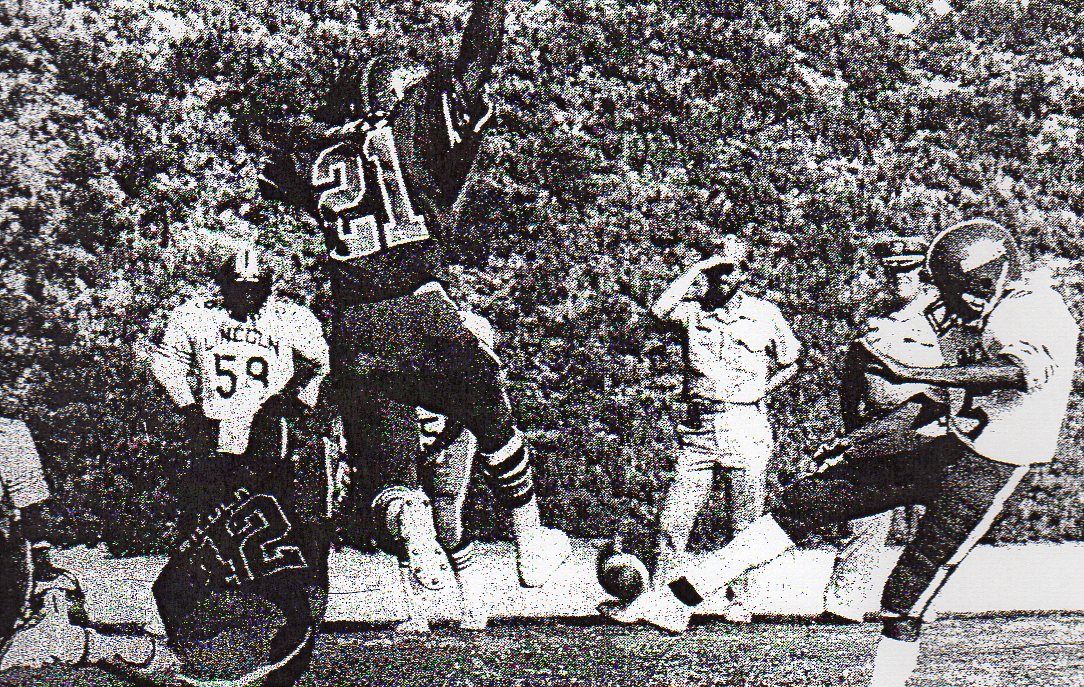
typical of the Chieftains’ 10-1-1 season, best in school history. Clairemont won this game, 21-6, and repeated over the Hive in the 2-A finals, 41-26.
WRITERS ALSO GROUNDED
When the game started Brand was in the press box high above the field. “It got so bad we could not see the game at all. The media went down to the field and I remember creeping along the sideline, trying to see. The fog grounded the Helix attack.”
What struck Brand even more was response of the announced crowd of 15,302.
“The game clock operator and the announcer also were on the field, which meant that when one of the teams scored there was a very obvious pause between the score, the announcement, and the cheers,” said Brand.
“If we were on our sideline hashmark and sent someone in motion, he disappeared in the fog,” said Arnaiz.
“We continued to throw the ball but they were all checkdown, short passes, “said the Highlanders’ coach. “You could not throw beyond 10 yards. Our passing attack took a beating.”
VISTA 2-0 VERSUS HIGHLANDERS
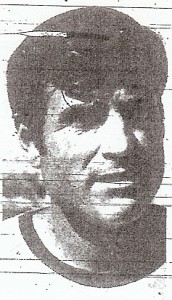
“Vista ran the heck out of the option and Dan did a great job of holding them down with his great play. He went out (with an injury) after the first quarter and they began to wear us down.”
Who’s the say Vista wouldn’t have won, fog, rain, or clear skies? The Panthers defeated Helix 24-0 in the season’s hastily prepared, first game, the so-called “10th game”, which the CIF approved at the end of the 1980-81 school year.
Fog is not a problem, if you’re Vista. The Panthers defeated Patrick Henry, 32-0, in a heavy, seasonal shroud for the championship in 1974.
Arnaiz and Haines were virtually even when they hung up their whistles after a combined 52 seasons on the San Diego scene.
Arnaiz was 212-77-7 with 6 trips to the finals (4-2) and a .726 winning percentage in 27 seasons. Haines was 194-85-1 (.698) with 6 championship games (3-3) and a 3-0 record head to head with Arnaiz in 25 seasons.
CHARGERS CONNECTION, CON’T
Grossmont quarterback Jeff Van Raaphorst, the son of Dick Van Raaphorst, a kicker for the Chargers in 1966-67, piloted another air-oriented attack.
A placekicker and a converted tight end, Van Raaphorst was virtually even with Helix’ Jim Plum in the regular season with 25 touchdown passes and 2,975 yards passing. Plum had 2,793 and 27.
Plum had the edge when Helix defeated Grossmont, 49-14, with a line that read 18 for 22, 336 yards, and 4 touchdowns. Van Raaphorst completed 20 of 41 passes for 329 yards, and 1 TD.
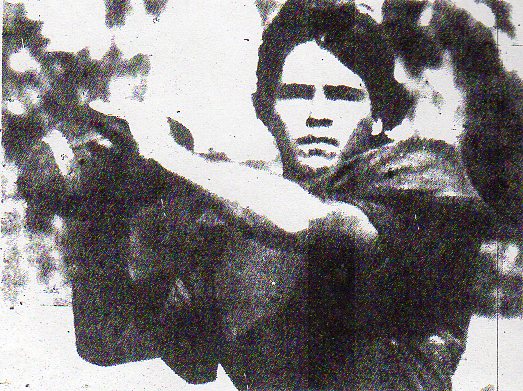
CONNECTIONS, CON’T.
Willie McCloud of Clairemont, a 6-foot, 1-inch, 160-pounder, was the son of Willie McCloud a San Diego High football and baseball standout from 1957-59.
Fallbrook coach Tom Pack attended Mission Hills’ Bishop Alemany in the San Fernando Valley, where Granada Hills was an L.A. City Section power, holding sway under coach Jack Neumeier, who nurtured several quarterbacks, including John Elway.
Neumeier retired in 1979…to Fallbrook. “That Jack Neumeier?” Pack exclaimed when a Fallbrook High teacher and neighbor of Neumeier’s casually mentioned the name.
After constructing a new home, Neumeier was free and accepted Pack’s oft-repeated invitation to join the Warriors’ staff as an unattached assistant coach, sitting in the press box during the first half of games and heading to the sidelines with his play sheets and observations in the second half.
Neumeier brought his spread offense and passing game to the Warriors and the results were dramatic. Fallbrook scored 82 points and had a 4-5 record in 1980. They improved to 228 points and an 8-2 record this year, their second winning season since 1967.
MADISON PLAYER’S SILENT WORLD
Darryl Rutland, a 17-year-old, 6-foot, 1-inch, 200-pound junior nose guard occupied a unique position in the Madison defense.
Rutland was deaf.
“It’s totally refreshing to have Darryl on our squad.” head coach Bob Bishop told Bud Maloney of the Evening Tribune. “He doesn’t hear the roar of the crowd, just goes out and plays football.”
What about a play-ending whistle by officials? Would Rutland be at risk for a penalty.
“No,” said Bishop. “Darryl plays a very controlled game. He’s very intelligent, knows the rules, and plays by them. He has never had a penalty…i think it would be the official’s mistake if one was.”
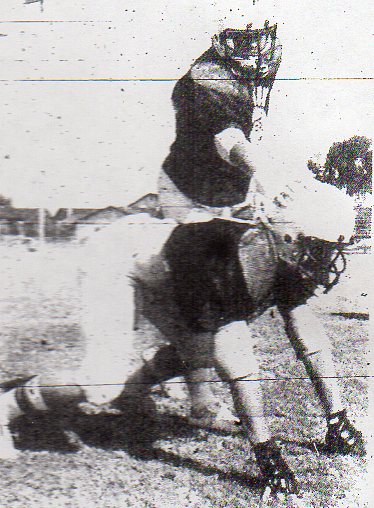
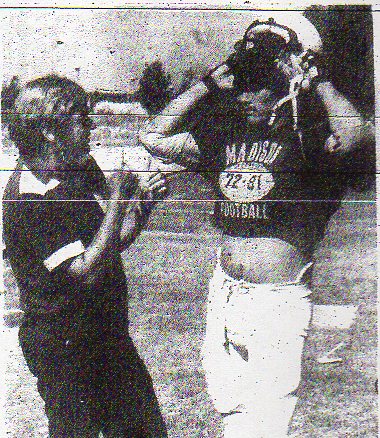
WHO ARE THESE GUYS?
Virtually ignored by the media were very small public and private schools that included Borrego Springs, Francis Parker, Julian, Victory Christian, Chula Vista Christian, La Jolla Country Day, and Santa Fe Christian. They all labored in six-man and eight-man football obscurity.
Like life on the African veldt, only the strong survived, i.e., those with healthy enrollment and paid-up tuition.
Julian, which began playing in 1967, and Borrego Springs, first season of football in 1967, moved down from 11-man and found their niches in lesser numbers. So did Santa Fe Christian.
10 MORE THAN ENOUGH?
Twenty-nine schools took advantage of the board of managers’ approval of an extra game. The schools played before classes started and with limited time to prepare.
Reaction was mixed.
“I’m all for it,” enthused Vista coach Dick Haines, whose team ended Helix’ 12-game winning streak 24-10 before 5,500 persons at Vista. “It was a well-played game with few penalties and no injuries.”
But there were 300 yards in accepted penalties and a couple players sidelined when Sweetwater defeated Carlsbad 18-13. “I still think the extra game is worthwhile,” said Carlsbad coach Mel Galli.
Point Loma and Morse played before a small crowd in the so-named first “Friendship Bowl”. “It’s not fair to gauge the crowd because neither school knew about the game until a month ago,” said the Pointers’ Bennie Edens.
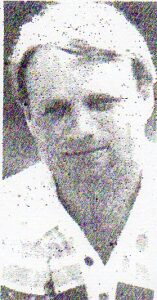
Point Loma and Morse were the only city schools to accept the extra game invitation and the teams gathered afterward for a postgame meal. Players with identical jersey numbers sat across from each other.
“It’s not worth it, no matter what the crowd was,” said Granite Hills’ Paul Wargo. “It was too soon. I question the sanity of having a 10th game without preparation.” Wargo’s club beat Bonita Vista 14-0.
“You have to budget your time,” said Jim Arnaiz. “Because of the early start we don’t have the luxury of one-a-day practices (instead of “double days”).
Mount Miguel’s Brian Smith said some schools took advantage of unclear guidelines during the one-week of conditioning. “We weren’t even supposed to touch the football. Some schools touched the ball, believe me.”
“If they could allow us to split the one week of conditioning period into three days of straight conditioning and three allowing use of the ball and blocking dummies, it would be better,” said Arnaiz.
Carlsbad’s Galli cut to the chase: “We’ll make some money off the game, even if the crowd was down a little.”
San Diego Section schools never looked back. Ten regular-season games became the norm.
WORTH THE WAIT
University City, 17 years after original planning, opened on 80 acres off Genesee Avenue in North Clairemont, the Section’s 64th football-playing school and 13th in the San Diego Unified School district.
Money for U. City, which began with 10th and 11th graders and played a junior varsity schedule, was included in a 1974 bond measure, but “politics, court battles, and angry homeowners delayed construction for six years,” reported The Union.
HELLO, BALBOA
The new Balboa Stadium, at Glenn Broderick Field, named after a San Diego High football and track coach in the 1920s and ‘thirties, was home field again for San Diego.
The Cavers played three games in the 3,700-seat facility, which was wired for lights and future expansion to 5,000 seats.
The original stadium was built in 1914. An upper deck to accommodate the San Diego Chargers was constructed in 1961. The stadium was demolished in 1978.
QUICK KICKS
Helix linebacker and baseball catcher Jerry Schniepp saw beyond the game… Schniepp was destined for a career in athletics and in 2011 became the fifth commissioner in San Diego Section history, serving until Schniepp’s 2020 retirement… the CIF finally was able to raise $21,000 through donations to cover expenses for using San Diego Stadium as the championship venue after fears that a financial shortfall would force the two games to 4,000-seat Mesa College, 7,200-seat Southwestern College, or the 5,500-seat Mt. Carmel High… Helix’ Jim Plum cut off the tip of a finger on his throwing hand in a lawnmower accident in May but “I was throwing a nerf ball as soon as they put in the stitches,” said Plum. Dennis Shaw, who passed for 39 touchdowns in leading Don Coryell’s San Diego State team to an 11-0 record in 1969, became head coach at Chula Vista… Monte Vista beat Helix for only the fifth time in 21 seasons and the Monarchs began the week of preparation “thinking brave,” said coach Gary Cooper, perhaps recalling Hollywood’s Gary Cooper and his brave stand in the movie, “High Noon”…. Sweetwater rolled through the Mesa League behind the powerful running of James Primus and senior brothers, quarterback Wes Saleamua and fullback Dan, who were 13 months apart in age… as a 300-pound defensive lineman, Dan became a seventh-round NFL draft choice out of Arizona State in 1987 and played 12 seasons and in 177 games for three teams… Helix’ Karl Dorrell was a four-year letterman at wide receiver at UCLA and was the Bruins’ head coach from 2003-07…Dorrell became head coach at Colorado in 2020 after several years on NFL staffs… Patrick Henry’s Don Shafer tied a CIF record with 3 field goals in a 9-9 tie with Lincoln… .Lincoln reached the 2-A finals behind the quarterbacking of 5-foot, 4-inch Rodney Hill…Section newcomer Imperial defeated Mountain Empire, 15-6, for the 1-A championship….